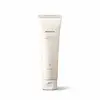What's inside
What's inside
 Key Ingredients
Key Ingredients

 Benefits
Benefits

 Concerns
Concerns

 Ingredients Side-by-side
Ingredients Side-by-side

Glycerin
HumectantWater
Skin ConditioningDipropylene Glycol
HumectantCetearyl Alcohol
EmollientCoco-Caprylate/Caprate
EmollientDicaprylyl Ether
Emollient1,2-Hexanediol
Skin ConditioningDipentaerythrityl Hexahydroxystearate/Hexastearate/Hexarosinate
Skin ConditioningCetearyl Olivate
Cetyl Ethylhexanoate
EmollientBifida Ferment Filtrate
Skin ConditioningSaccharomyces/Rice Ferment Filtrate
Skin ConditioningGlycolipids
Skin ConditioningEctoin
Skin ConditioningBisabolol
MaskingCeramide NP
Skin ConditioningCeramide AP
Skin ConditioningCeramide EOP
Skin ConditioningPanthenol
Skin ConditioningMethionine
Skin ConditioningCysteine
AntioxidantAllantoin
Skin ConditioningPortulaca Oleracea Extract
Skin ConditioningTremella Fuciformis Extract
HumectantHydrogenated Phosphatidylcholine
EmulsifyingPhytosphingosine
Skin ConditioningCholesterol
EmollientTocopherol
AntioxidantFerulic Acid
AntimicrobialUbiquinone
AntioxidantPhytosteryl/Octyldodecyl Lauroyl Glutamate
Skin ConditioningMorus Alba Root Extract
BleachingBambusa Vulgaris Extract
Skin ConditioningArctium Lappa Root Extract
Skin ConditioningScutellaria Baicalensis Root Extract
AstringentGlucose
HumectantCichorium Intybus Root Extract
MaskingAllium Cepa Bulb Extract
Skin ConditioningSorbitan Olivate
EmulsifyingSodium Polyacryloyldimethyl Taurate
Emulsion StabilisingGlyceryl Stearate Se
EmulsifyingCetearyl Glucoside
EmulsifyingButylene Glycol
HumectantPolyglyceryl-10 Stearate
Skin ConditioningTriethyl Citrate
MaskingPolyglyceryl-6 Behenate
Emulsion StabilisingSodium Levulinate
Skin ConditioningBehenic Acid
CleansingGlyceryl Stearate
EmollientAnthemis Nobilis Flower Extract
MaskingHelianthus Tuberosus Root Extract
Skin ConditioningCaprylyl Glycol
EmollientSodium Cetearyl Sulfate
CleansingEthylhexylglycerin
Skin ConditioningGlycerin, Water, Dipropylene Glycol, Cetearyl Alcohol, Coco-Caprylate/Caprate, Dicaprylyl Ether, 1,2-Hexanediol, Dipentaerythrityl Hexahydroxystearate/Hexastearate/Hexarosinate, Cetearyl Olivate, Cetyl Ethylhexanoate, Bifida Ferment Filtrate, Saccharomyces/Rice Ferment Filtrate, Glycolipids, Ectoin, Bisabolol, Ceramide NP, Ceramide AP, Ceramide EOP, Panthenol, Methionine, Cysteine, Allantoin, Portulaca Oleracea Extract, Tremella Fuciformis Extract, Hydrogenated Phosphatidylcholine, Phytosphingosine, Cholesterol, Tocopherol, Ferulic Acid, Ubiquinone, Phytosteryl/Octyldodecyl Lauroyl Glutamate, Morus Alba Root Extract, Bambusa Vulgaris Extract, Arctium Lappa Root Extract, Scutellaria Baicalensis Root Extract, Glucose, Cichorium Intybus Root Extract, Allium Cepa Bulb Extract, Sorbitan Olivate, Sodium Polyacryloyldimethyl Taurate, Glyceryl Stearate Se, Cetearyl Glucoside, Butylene Glycol, Polyglyceryl-10 Stearate, Triethyl Citrate, Polyglyceryl-6 Behenate, Sodium Levulinate, Behenic Acid, Glyceryl Stearate, Anthemis Nobilis Flower Extract, Helianthus Tuberosus Root Extract, Caprylyl Glycol, Sodium Cetearyl Sulfate, Ethylhexylglycerin
Calendula Officinalis Flower Extract
MaskingCaprylic/Capric Triglyceride
MaskingAloe Barbadensis Leaf Extract
EmollientButylene Glycol
HumectantGlycerin
HumectantButyrospermum Parkii Butter
Skin ConditioningHydrogenated Lecithin
EmulsifyingCocos Nucifera Oil
MaskingWater
Skin ConditioningOctyldodecanol
EmollientCoco-Caprylate/Caprate
Emollient1,2-Hexanediol
Skin ConditioningArachidyl Alcohol
EmollientHydroxyethylcellulose
Emulsion StabilisingPropanediol
SolventBehenyl Alcohol
EmollientEthylhexylglycerin
Skin ConditioningArachidyl Glucoside
EmulsifyingAcrylates/C10-30 Alkyl Acrylate Crosspolymer
Emulsion StabilisingArginine
MaskingCeramide NP
Skin ConditioningHydrogenated Olive Oil Unsaponifiables
EmollientCopernicia Cerifera Wax
Verbena Officinalis Extract
EmollientRosmarinus Officinalis Leaf Extract
AntimicrobialChamomilla Recutita Flower Extract
MaskingTamarindus Indica Seed Polysaccharide
Skin ConditioningMaltodextrin
AbsorbentCalendula Officinalis Flower Extract, Caprylic/Capric Triglyceride, Aloe Barbadensis Leaf Extract, Butylene Glycol, Glycerin, Butyrospermum Parkii Butter, Hydrogenated Lecithin, Cocos Nucifera Oil, Water, Octyldodecanol, Coco-Caprylate/Caprate, 1,2-Hexanediol, Arachidyl Alcohol, Hydroxyethylcellulose, Propanediol, Behenyl Alcohol, Ethylhexylglycerin, Arachidyl Glucoside, Acrylates/C10-30 Alkyl Acrylate Crosspolymer, Arginine, Ceramide NP, Hydrogenated Olive Oil Unsaponifiables, Copernicia Cerifera Wax, Verbena Officinalis Extract, Rosmarinus Officinalis Leaf Extract, Chamomilla Recutita Flower Extract, Tamarindus Indica Seed Polysaccharide, Maltodextrin
Ingredients Explained
These ingredients are found in both products.
Ingredients higher up in an ingredient list are typically present in a larger amount.
1,2-Hexanediol is a synthetic liquid and another multi-functional powerhouse.
It is a:
- Humectant, drawing moisture into the skin
- Emollient, helping to soften skin
- Solvent, dispersing and stabilizing formulas
- Preservative booster, enhancing the antimicrobial activity of other preservatives
Butylene Glycol (or BG) is used within cosmetic products for a few different reasons:
Overall, Butylene Glycol is a safe and well-rounded ingredient that works well with other ingredients.
Though this ingredient works well with most skin types, some people with sensitive skin may experience a reaction such as allergic rashes, closed comedones, or itchiness.
Learn more about Butylene GlycolCeramide NP is a type of ceramide and formally known as ceramide 3.
Ceramides are intercellular lipids naturally found in our skin that bonds dead skin cells together to create a barrier. They are known for their ability to hold water and thus are a great ingredient for dry skin.
Ceramides are an important building block for our skin barrier. A stronger barrier helps the skin look more firm and hydrated. By bolstering the skin ceramides act as a barrier against irritating ingredients. This can help with inflammation as well.
If you would like to eat ceramides, sweet potatoes contain a small amount.
Read more about other common types of ceramides here:
Ceramide AP
Ceramide EOP
Coco-Caprylate/Caprate is created from fatty coconut alcohol, caprylic acid, and capric acid.
It is a lightweight emollient. Emollients create a thin barrier on the skin to trap moisture in. This helps keep your skin hydrated and soft.
Once applied, Coco-Caprylate/Caprate is absorbed quickly and leaves a silky feel.
Coco-Caprylate/Caprate may not be fungal acne safe.
Learn more about Coco-Caprylate/CaprateEthylhexylglycerin (we can't pronounce this either) is commonly used as a preservative and skin softener. It is derived from glyceryl.
You might see Ethylhexylglycerin often paired with other preservatives such as phenoxyethanol. Ethylhexylglycerin has been found to increase the effectiveness of these other preservatives.
Glycerin is already naturally found in your skin. It helps moisturize and protect your skin.
A study from 2016 found glycerin to be more effective as a humectant than AHAs and hyaluronic acid.
As a humectant, it helps the skin stay hydrated by pulling moisture to your skin. The low molecular weight of glycerin allows it to pull moisture into the deeper layers of your skin.
Hydrated skin improves your skin barrier; Your skin barrier helps protect against irritants and bacteria.
Glycerin has also been found to have antimicrobial and antiviral properties. Due to these properties, glycerin is often used in wound and burn treatments.
In cosmetics, glycerin is usually derived from plants such as soybean or palm. However, it can also be sourced from animals, such as tallow or animal fat.
This ingredient is organic, colorless, odorless, and non-toxic.
Glycerin is the name for this ingredient in American English. British English uses Glycerol/Glycerine.
Learn more about GlycerinWater. It's the most common cosmetic ingredient of all. You'll usually see it at the top of ingredient lists, meaning that it makes up the largest part of the product.
So why is it so popular? Water most often acts as a solvent - this means that it helps dissolve other ingredients into the formulation.
You'll also recognize water as that liquid we all need to stay alive. If you see this, drink a glass of water. Stay hydrated!
Learn more about Water